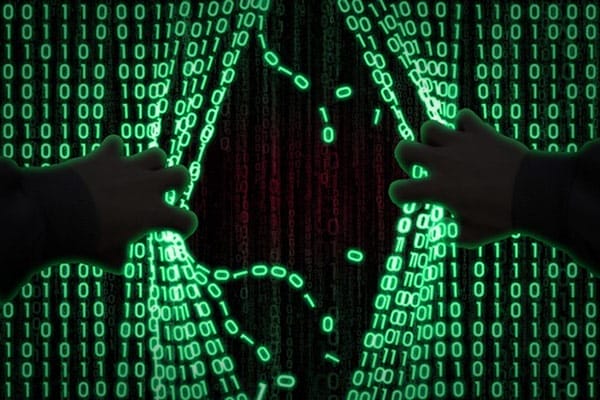Key Takeaways
- Energy blockchain technology transfers digital data in a 100% safe, encrypted, and unchangeable form.
- Information stored on blockchains cannot be lost or altered, providing complete transparency.
- Blockchain in energy opens up honest, real-time conversations between energy producers and customers, with the power to transform the energy market.
Energy blockchain: these two small but fairly heavy-sounding words don’t conjure images of a game-changer blasting off the doors to a brighter future for everyone.
However, energy blockchain could be the key to a renewable energy-led future with more accessible green energy worldwide.
Can this blockchain innovation truly transform the energy sector? It’s already changing energy systems and business models in ways never before thought possible. Here’s a closer look.
How Does Energy Blockchain Technology Enhance Traditional Energy Systems?
Blockchain applications eliminate intermediaries, allowing for 100% transparent conversations between people, businesses, industries, governments, and other interested stakeholders.
Its automation allows for real-time information exchanges with built-in traceability. For example, an electric vehicle (EV) owner charging their car using a smart meter linked to a blockchain platform would know if the electricity came from green energy sources, per their contract. At present, most EV owners have to trust that their electric company is sourcing clean energy.
Acciona has developed the world’s first energy blockchain platform in Europe, Greenchain. This blockchain-based energy trading platform allows users to see the origins of their renewable electricity in real time.
What Is Blockchain Technology?
Blockchain’s greatest strength is its simplicity. It transforms traditional systems and puts power in the hands of everyone.
Previously, the electricity market was centralized. Utilities controlled power plants and power grids, not their millions of users. Blockchain’s functionality inverts this through a decentralized, peer-to-peer (P2P) system that no single person controls.
To understand how blockchain does this, we must travel back to 2009, the quiet birth of the now world-famous Bitcoin cryptocurrency. Bitcoin introduced the widespread use of blockchain to a global audience.
Blockchain is essentially an enormous database called digital distributed ledger technology (DLT). All stakeholders and users of that blockchain can see every incoming transaction, including who triggers it and all its details. Any transaction added to the blockchain requires approval from all.
Once approved, no one can alter this public record. With so many eyes on transactions, corruption and fraud are almost impossible. The process is automated on blockchain platforms via “smart contracts.”
These smart contracts are stored on blockchain platforms and execute pre-agreed actions when specific terms and conditions are met. For example, a connected EV’s fully charged battery could start feeding energy into a grid if demand dictates and the smart contract contains that condition. Similarly, it could also begin charging EVs should energy companies drop their prices during periods of low demand via a smart contract.
Blockchain networks monitor, execute, and record these energy transactions, overseeing interoperability between multiple players in the energy chain. Transparency is crucial in an increasingly fast-moving digital world.
What Is the Role of Blockchain Technology in the Energy Sector?
Every part of the energy sector is becoming increasingly decentralized. Homeowners and industrial moguls no longer wait for power plants to supply their energy needs. Startups can innovate and disrupt traditional systems with technology, turning small renewable energy projects into contributors to the power grid.
Blockchain solutions and ecosystems are stepping into this diverse and complicated energy generation arena as the energy supply chain evolves. Their accurate recording of energy transactions will play a vital role as the world aims for an energy transition to net-zero emissions by 2050.
Microgrids are blooming, from solar panels on houses to industrial on-site electricity generators and small wind energy turbines. All these, and EV batteries, can push electric power back into the grid, many being paid for their power additions as so-called “prosumers.” These micro-generators are also called distributed energy resources (DERs).
DERs are becoming an integral part of the global power mix, with investment expected to more than triple from just under $264 billion in 2022 to more than $916 billion by 2032. Much of that concerns our love of the automobile, which could bring millions of little DERs into the world as new EVs with their batteries.
That’s because EV sales are forecast to boom. By 2030, almost one in three new cars bought in the US will be electric. That’s a vast number of potential prosumers. This is one reason power grids are increasingly complex, with operators matching supply and demand in real-time and balancing power plant output with thousands of mini-generators.
Surges and drops in supply from these myriad intermittent renewable energy sources are another way the power grid balancing act is increasingly difficult. Blockchain technologies can help manage power generation by storing energy in EV batteries that may otherwise have been lost.
Enter your ZIP Code and compare electricity rates
How Can Blockchain Develop Smart Grids and Energy Efficiency?
Traditional power grids can be thought of as power plants — a beating heart sending power through millions of veins to the farthest reaches of a body. A smart grid keeps that heart beating but allows millions of little pumps to join the system, making it more efficient.
Smart grids, by design, use technology to drive their decisions:
- When to fire up power stations
- When to ask people or industry to reduce power use
- How to balance renewable energy generation
Blockchain technology will track the millions of transactions the smart grid performs to achieve its aim. It can also help identify power trends and asset management and identify issues like leaks or malfunctions for energy generators. All these use cases are small steps towards a more energy-efficient world, where people understand the cost of electricity generation and are part of an organic energy ecosystem that makes the most of power.
Smart grids need a reliable ledger to record all this activity, much of which happens at digital speed. Automation, smart metering, AI, big data, and the Internet of Things (IoT) are all part of an expanding and increasingly connected power grid.
How Can Blockchain Facilitate Peer-to-Peer Energy Transactions and Decentralized Energy Trading?
Peer-to-peer (P2P) is the digital equivalent of face-to-face trading. Retailers, consumers, and energy companies can all interact via blockchain-enabled platforms. This peer energy trading setup replaces the traditional system of transactions going through a utility or grid operator.
That’s led to members of a community solar panel array in Australia selling its green energy via a P2P energy trading system. Global energy group ENGIE guarantees customers receive renewable energy via its blockchain-based Renewable Energy Certificates (RECs).
WePower pioneered 100% smart metering on blockchain platforms in Estonia to track the country’s energy consumption and generation. Smart contracts run on the Ethereum blockchain platform automated the procedure. Power is, literally, falling into the hands of the many.
Energy blockchain also helps big players by smoothing transactions between large fossil fuel companies in the energy markets.
What Are the Benefits of Using Blockchain for Energy Transactions?
The benefits of blockchain-enabled energy transactions include:
- Secure, transparent, traceable, and unalterable information about energy generation, consumption, and source.
- Decentralization of power within the energy market can liberate people, consumers, and businesses to participate in peer-to-peer energy trading.
- A reduction in fraud and corruption within the energy sector, reducing greenwashing through immutable transaction records of schemes like carbon credits and renewable energy sources.
- Fewer intermediaries are taking a slice of the energy pie.
- Data privacy is achieved through the secure information stored on a blockchain.
- Assistance to operators in balancing the power grid and developing smart grids with faster and automated processes.
- An increase in renewable energy generation and a boost toward net-zero emissions by 2050.
- Increased energy efficiency promotes sustainability by flicking the grid to store energy in EV batteries or pumped hydro storage systems during periods of low energy demand.
What Are 5 Interesting Energy Blockchain Statistics?
Here are some fascinating facts about the impact of the energy blockchain so far:
- The first energy blockchain transaction occurred in April 2016 in Brooklyn, New York.
- Chile has been tracking its energy data since 2018 on an energy blockchain.
- Energy sector investment in blockchain technology will have a compound annual growth rate (CAGR) of 54% between 2019 and 2024.
- Blockchain investment globally could reach $3 trillion annually by 2030.
- Cryptocurrency Ethereum reduced its emissions by 99.97% when it switched to a new blockchain data verification system called Proof of Stake.
What Are Blockchain’s Challenges in the Energy Sector?
Blockchain is a tool for monitoring transactions but it does have limitations. Many power grids are not smart-ready, meaning they are not blockchain-ready, so smart metering and energy trading cannot occur. Blockchain itself can record data, but it can’t balance grids.
Clearly, only some players in the energy market are interested in 100% transparency and traceability, and there will be pushback within the energy industry. Profits and market dominance must be protected.
Blockchain, like all technologies, is not 100% hack-proof. It also needs to resolve scalability issues and how it deals with the complex regulatory nature of the energy industry within smart contracts. Remember, there’s no way back once something has been executed on the blockchain. An overcharged customer whose account goes into the red after a smart contract incorrectly charged them won’t care much for blockchain.
Blockchain technology, with all peers agreeing to data before adding it to a ledger, also requires plenty of energy. Blockchain’s association in many people’s minds with the negative aspects of cryptocurrencies also requires shifting.
Energy Blockchain Technology and Peer Energy Trading
Blockchain is the new kid on the block looking to disrupt the world’s traditional energy markets. Energy blockchain fans see a path to an energy industry that links people, small-scale energy producers, and regulation via smart grids down to their smartphones. Millions of secure and open transactions would be recorded on blockchain ledgers ostensibly for the betterment of humankind.
At its best, energy blockchain would allow real-time peer-to-peer energy trading, allowing people to trust they’ve bought clean energy from a renewable energy generator, large or small. Electric vehicles, collectively soon to be an enormous power storage pool, can push or draw electricity from the grid at optimum times, with everything recorded to ensure everyone gets charged or paid correctly.
Big businesses would no longer be greenwashing. Energy waste could be identified and addressed. Blockchain’s transparent and traceable abilities might make a pathway to net-zero emissions easier.
However, blockchain has many hurdles before complete adoption. Scaling, efficiency, and trust are the obstacles. However, the forecasted $3 trillion investment by 2030 should go some way toward addressing those issues.
Brought to you by justenergy.com
All images licensed from Adobe Stock.




